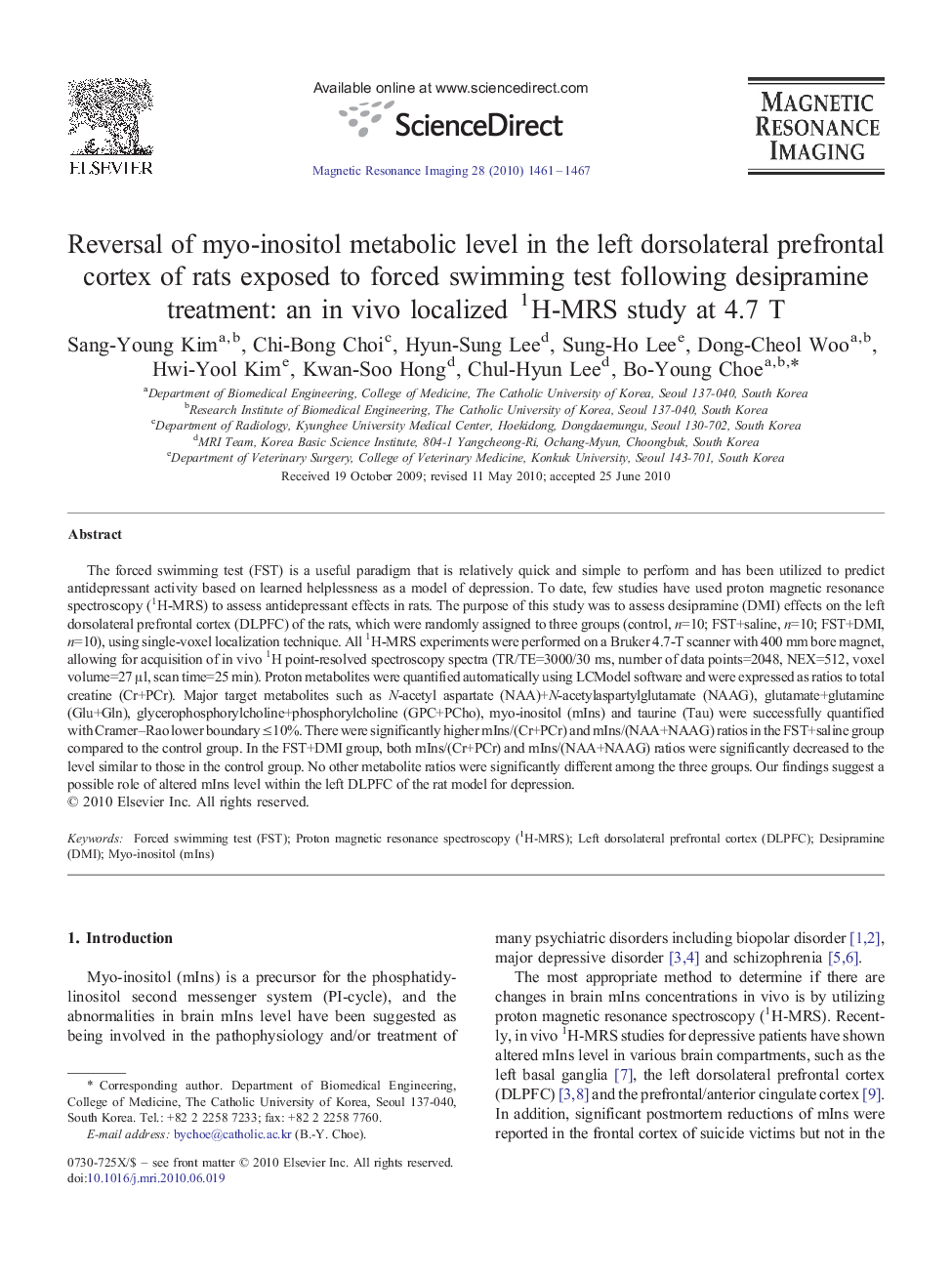| Article ID | Journal | Published Year | Pages | File Type |
|---|---|---|---|---|
| 1806838 | Magnetic Resonance Imaging | 2010 | 7 Pages |
Abstract
The forced swimming test (FST) is a useful paradigm that is relatively quick and simple to perform and has been utilized to predict antidepressant activity based on learned helplessness as a model of depression. To date, few studies have used proton magnetic resonance spectroscopy (1H-MRS) to assess antidepressant effects in rats. The purpose of this study was to assess desipramine (DMI) effects on the left dorsolateral prefrontal cortex (DLPFC) of the rats, which were randomly assigned to three groups (control, n=10; FST+saline, n=10; FST+DMI, n=10), using single-voxel localization technique. All 1H-MRS experiments were performed on a Bruker 4.7-T scanner with 400 mm bore magnet, allowing for acquisition of in vivo 1H point-resolved spectroscopy spectra (TR/TE=3000/30 ms, number of data points=2048, NEX=512, voxel volume=27 μl, scan time=25 min). Proton metabolites were quantified automatically using LCModel software and were expressed as ratios to total creatine (Cr+PCr). Major target metabolites such as N-acetyl aspartate (NAA)+N-acetylaspartylglutamate (NAAG), glutamate+glutamine (Glu+Gln), glycerophosphorylcholine+phosphorylcholine (GPC+PCho), myo-inositol (mIns) and taurine (Tau) were successfully quantified with Cramer-Rao lower boundary â¤10%. There were significantly higher mIns/(Cr+PCr) and mIns/(NAA+NAAG) ratios in the FST+saline group compared to the control group. In the FST+DMI group, both mIns/(Cr+PCr) and mIns/(NAA+NAAG) ratios were significantly decreased to the level similar to those in the control group. No other metabolite ratios were significantly different among the three groups. Our findings suggest a possible role of altered mIns level within the left DLPFC of the rat model for depression.
Related Topics
Physical Sciences and Engineering
Physics and Astronomy
Condensed Matter Physics
Authors
Sang-Young Kim, Chi-Bong Choi, Hyun-Sung Lee, Sung-Ho Lee, Dong-Cheol Woo, Hwi-Yool Kim, Kwan-Soo Hong, Chul-Hyun Lee, Bo-Young Choe,
